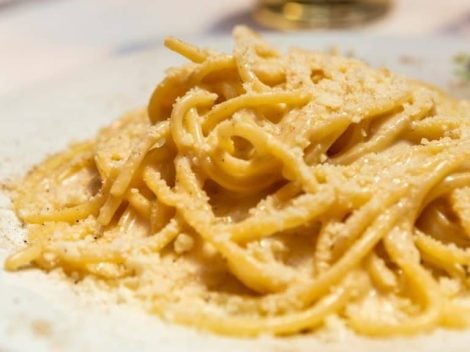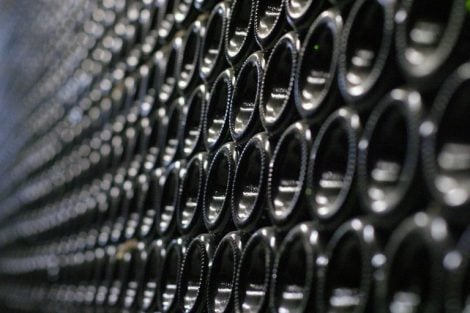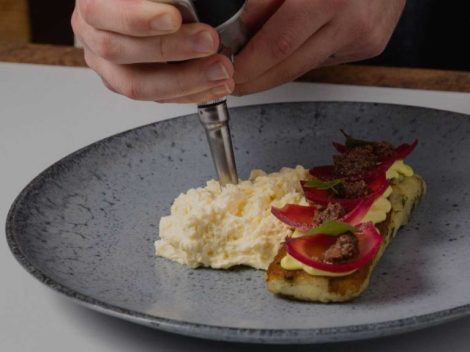This meant the dispensa, the pantry, had shelves upon shelves of pickled vegetables from the garden, bottles of home made tomato preserve, sauces and many jars of summer fruit jam. Even in more lofty times, the tradition endures. Here are a few Italian pantry basics and the work that goes into producing them at home.
Sott’oli & Sott’aceti
Though Italians often mention them in the same breath, sott’oli and sott’aceti are two quite different foods. Sott’oli are foods packed in olive oil, and require care in preparation, definitely more care than what goes into pickling since oil is not a preservative, rather simply prevents deterioration by isolating the vegetables from air. Oil-packed foods must be fully cooked and transferred quickly to a sterile jar, drowned in extra virgin olive oil, and finally tapped briskly in order to dislodge any air bubbles. Packing raw foods in oil poses a serious health hazard since uncooked food can harbour bacteria, even if the surface is properly cleaned beforehand. Favourite sott’oli include carciofini (tiny roasted artichokes), assorted mushrooms, oil-soaked sun-dried tomatoes, slivered eggplant and sweet peppers.
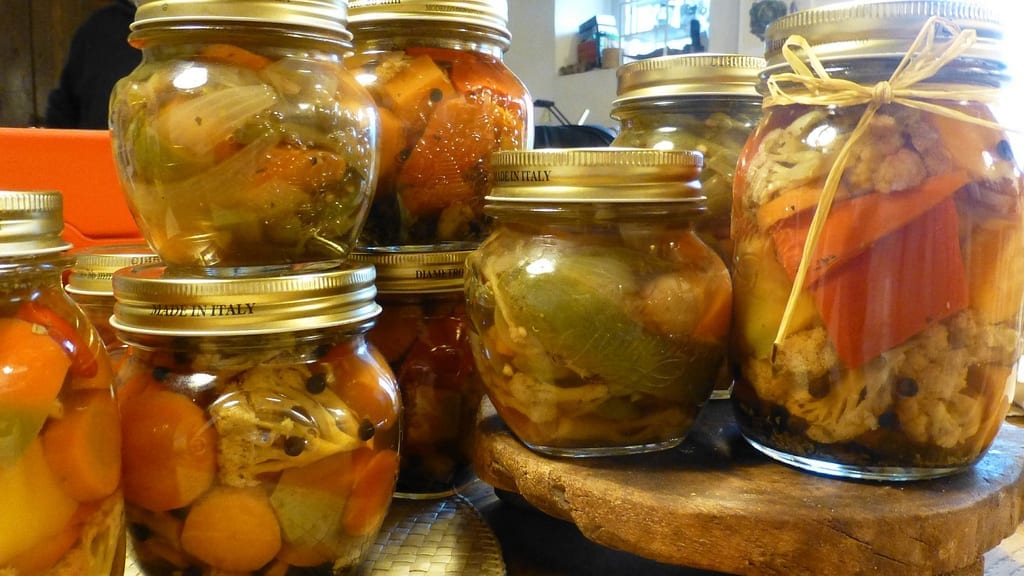
Sott’aceti are generally vegetables that are pickled in a wine vinegar brine, and whose acidity keeps the food from spoiling. A classic Italian example of this is giardiniera. This is a mix of vegetables – principally cocktail onions, zigzag-carved carrots, dill pickles, cauliflower florets and chopped bell peppers. Italian giardiniera is different from the U.S. condiment with the same name, which usually uses different assorted vegetables, such as olives and pimentos stored in vegetable oil. When pickling giardiniera, Italian homemakers suggest dividing the batch in several small jars since once opened, the content quickly loses much of its flavour and freshness.
Mostarda
Italians call the yellow spread “senape”, while mostarda is a tangy mixture of candied fruits soaked in a sweet mustard syrup, seasoned with rosé wine. The one typical of the town of Cremona can vary from mild to pungent, and it’s usually served to season boiled meats in the bollito misto entrée, or drizzled over aged cheeses. Mostarda can vary according to what northern Italian region it belongs to, like for example the mostarda made in Mantua, which uses candied apple only.
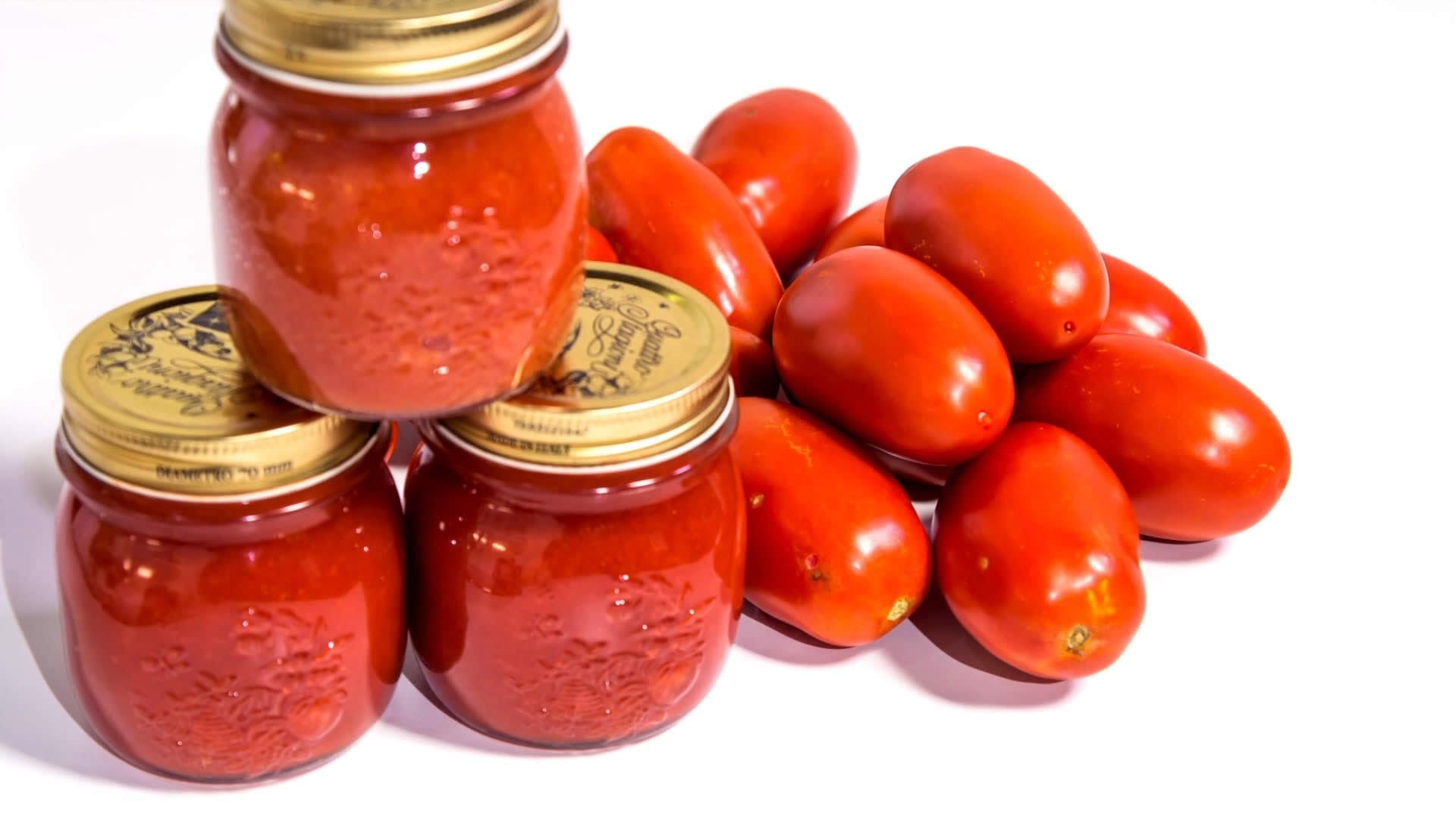
Passata
Also called pommarola, fresh tomato preserves is more of an Italian summertime activity than a genuine seasonal recipe. During the summer-long tomato harvest, families get busy peeling and canning tomatoes for passata. Most households make gallons of it when the flood of tomatoes reaches its peak in August. Mason jars get filled with the cooked tomatoes added with basil and salt, and constitute a delicious pantry staple with an incredibly long shelf life.
Estratto di pomodoro
“Strattu” is Sicilian sunshine in a jar. Triple concentrate tomato paste is not made as often as it used to be, but in Sicily this is still a time-honoured tradition. After a rinse in cold water the fresh tomatoes are halved, cooked with bay leaves and onion over medium heat long enough to start releasing their juice. The cooked tomatoes are then drained, put through a food mill twice and the sauce is left to rest overnight. The next morning the liquid tomato sauce is spread on large slanted wood tables in the direct sun. With the back of a metal spoon, the paste makers draw rivulets which allow the liquid from the tomato sauce to collect and dribble over the edge of the inclined tables, thus thickening the sauce. This continues for three days until the liquid is all ‘extracted’ making the tomato sauce super concentrated. After three days in the sun, the paste is left to rest and then jarred.
Pesto
The classic aroma of fresh basil, extra virgin olive oil, pecorino, parmigiano, garlic, salt and pine nuts embodies the essence of summer. In order to preserve the fresh basil bounty, Italians – Ligurians in particular – make pesto, the signature sauce of the city of Genoa. The earliest mention of pesto in Italian culinary literature dates back to the early 1800s, a recipe that has remained unchanged since. Using a mortar and pestle – hence the name – pesto sauce is a versatile raw condiment for pasta, but also a fine seasoning for soups, salads, crostini and pizza. The basil used for authentic pesto genovese is the small-leafed variety, but any kind of fresh, organic green basil will do. Of paramount importance is the quality of the extra virgin olive oil used, possibly local; as well as not oxidizing the basil. This can happen when the fresh leaves come in contact with metal blades. That’s why it’s advisable to use a blender with ceramic blades to grind the ingredients as an alternative to mortar and pestle.
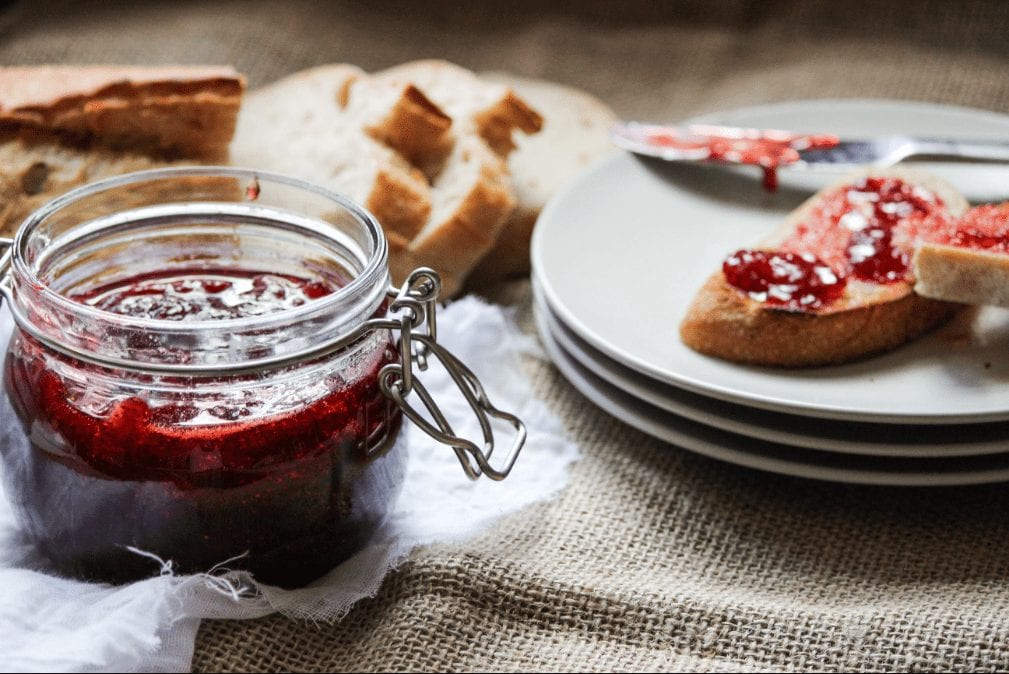
Confettura, Composta & Chutney
Once sugar became readily available, preserving became an ideal way to prolong the use of fruit to make it available all year round. Nowadays making jam is a pleasurable hobby. Confettura and composta refer to cooked fruit and sugar in varying proportions. Italians mistakenly often use the word “marmellata” when talking about jams and preserves, when in actual fact marmalade is the product of boiled citrus and pectin only.
Jam and preserves are generally subjected to a double sterilization process to ensure proper vacuum in sterile glass jars with a rubber gasket or self-sealing screw lid. Homemade jams can be kept out of the fridge but once the jar is opened, they must be kept in the refrigerator, and usually consumed within three weeks.
Chutney, the combination of cooked fruits (usually plums, pears, figs or apples) mixed with vinegar and sugar, is now a staple preserve found in most Anglo-Saxon kitchen pantries. Italians have recently started making chutneys with various products, such as pumpkin, tomatoes and red onions, and adding them as accoutrements to their cheese boards and roast beef dishes.
by Eleonora Baldwin

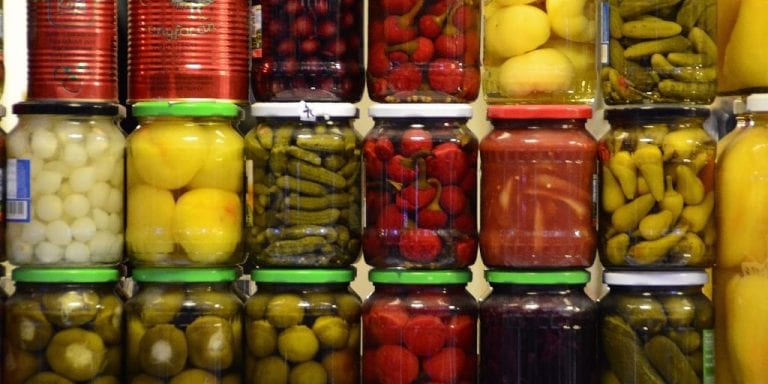
 "I wake up every morning with the idea that I don't know how to cook." The chef who enchanted New York with a restaurant without a menu
"I wake up every morning with the idea that I don't know how to cook." The chef who enchanted New York with a restaurant without a menu From the Metropolitan Pavilion to the Top Italian Restaurant: Gambero Rosso showcases Italian wine in New York
From the Metropolitan Pavilion to the Top Italian Restaurant: Gambero Rosso showcases Italian wine in New York The 14 best-value Pinot Noir wines among reds, rosés, and sparkling wines chosen by Gambero Rosso
The 14 best-value Pinot Noir wines among reds, rosés, and sparkling wines chosen by Gambero Rosso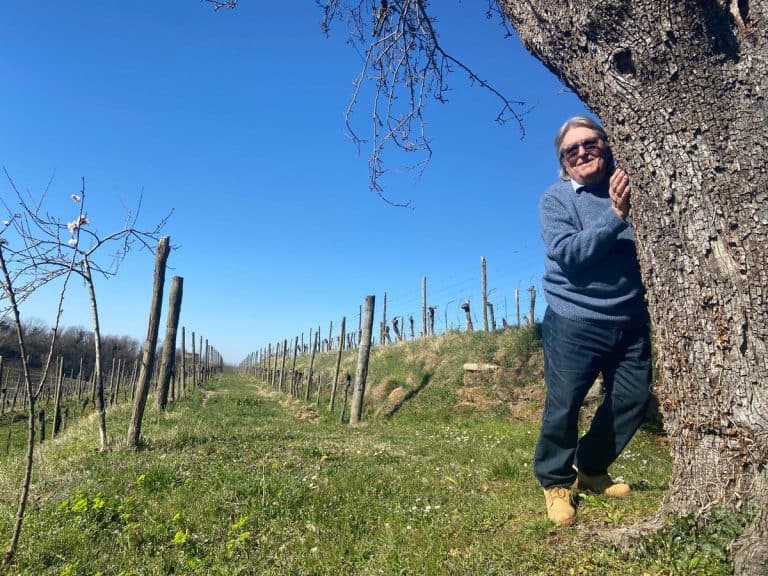 One of the best Pinot Bianco wines from Friuli Venezia Giulia is made by a former Bbnker. Here’s which one
One of the best Pinot Bianco wines from Friuli Venezia Giulia is made by a former Bbnker. Here’s which one Spoiler: wine export to the US in 2024 will break records, but consumption will decline as well
Spoiler: wine export to the US in 2024 will break records, but consumption will decline as well